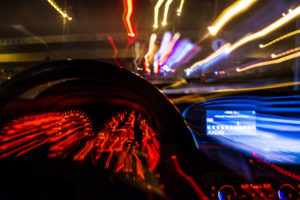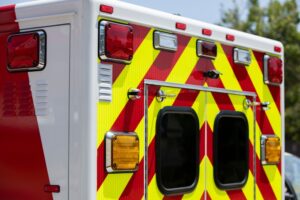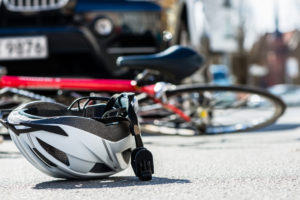There was a lot of water dumped on Southern Minnesota last week. We have seen the fall out with a number of roads being shut down:
- County Road 101
- Highway 41
- Highway 25 between Carver County Road 40
- Parts of 169
- northbound I-35W at Cliff Rd
- Hwy. 52 northbound north of Pine Island
- Hwy. 60 west of Zumbro Falls
- Hwy. 63 in Wabasha County
- Hwy. 65 in Albert Lea at Clark St.
It got me thinking about the need to know driving tips for rain:
- First and foremost: slow down! It takes longer to stop or adjust in wet weather.
- Stay toward the middle lanes – water tends to pool in the outside lanes.
- Maintain proper following distance (3 Second Rule). This needs to be increased in wet weather.
- Drive in the tracks of a car ahead of you.
- Don’t follow large trucks or busses too closely. The spray created by their large tires reduces your vision. Take care when passing them as well; if you must pass, do so quickly and safely.
- Be more alert when driving in wet or slippery conditions. Watch out for brake lights in front of you.
- Avoid using your brakes; if possible, take your foot off the accelerator to slow down.
- Turn your headlights on even in a light rain, or in gloomy, foggy or overcast conditions. Not only do they help you see the road, but they’ll help other drivers see you. If your car has daytime running lights you still should put them on, so vehicles behind you can see you better.
- Before it starts to rain, replace old or brittle wipers.
- Avoid off-road driving: it’s hard to judge the actual depth of puddles and you can easily become stuck, even in an SUV.
- Never drive beyond the limits of visibility. At night rainy roads become especially treacherous. The glare of oncoming lights, amplified by the rain on your windscreen, can cause temporary loss of visibility while substantially increasing driver fatigue. In rainy conditions pedestrians, livestock, and wildlife are extremely hard to spot and even harder to avoid.
- Never drive through moving water if you can’t see the ground through it; your car could be swept off the road.
- When driving through a puddle of uncertain depth, go slow. If it’s deeper than the bottom of your doors, turn around and find another route. Deep water can cause serious damage to a modern car’s electrical system.
- Avoid splashing pedestrians.
- If possible, stay off the road during heavy thunderstorms. Large flashes of lightning can temporarily blind and disorient drivers, and the accompanying high winds and heavy rain can create deadly driving conditions.
Specifically, concerning confronting water on the road:
Driving Through Water – Where water has flooded onto the road, drive very slowly and cautiously. Never drive through moving water if you can’t see the ground through it: you and your car could be swept off the road, possibly finishing you both. Stop the car before entering the flooded area and check the water level ahead. Generally, if the water is deeper than the bottom of your doors or the bottom third of your wheels, it is inadvisable to attempt driving through it. Seek a detour rather than braving the flood and risking damage to your electronic control systems. Attempting to go through deep water can ruin any of these systems, creating a repair bill in the thousands of dollars.
At night it’s much harder to see water hazards. You’ll need good road observational skills to notice the difference between a wet road surface and flood water. Watch the contours not only of the road but also of fences, trees, hedges and buildings at the side of the road ahead. If they appear to be unnaturally low, slow down at once as the road is probably flooded. If you don’t slow down and hit flood water at speed, the effect is almost like hitting a wall: you will first lose control, then come to a violent stop, possibly injuring your passengers as well. Watch out for places where floodwater collects, particularly low-lying roads adjacent to streams, and dips under rail or highway bridges.
If you determine it’s safe to go on, proceed slowly and avoid making large waves in the water. If you have a manual transmission, engage first gear and keep the engine running fast by releasing the clutch just enough to partially engage gear and giving more acceleration than usual. This keeps the exhaust gases moving, helping to prevent water from entering your tailpipe. Vehicles with automatic transmissions should place the car in first gear and feather your brake, slowing the vehicle while at the same time keeping your revs up. Doing this for longer than a few seconds can seriously damage your vehicle and is not recommended. If you’re submerged too deeply, your engine will stall and water might enter your engine through your air intake, causing a condition known engine hydro-lock, forcing you to replace it.
What to do if you stall in deep water – If possible, have someone pull your vehicle out using a tow rope or cable winch. It may be possible to drive a manual transmission car out using the starter motor. You can make the job easier by removing your spark-plugs, thereby lowering your compression and making your starter turn more easily. Take great care not to let water enter the cylinders, as it will hydro-lock your engine, ruining it. This is a last resort for rescuing a flooded vehicle and is not recommended.
Check your brakes – If you successfully pass through a deep water hazard, test your brakes. They may be saturated, and only driving very slowly and braking lightly at the same time will generate enough heat to dry them out. Be sure they are pulling evenly on all wheels before building up speed again.
It’s a time to think safety. I’m never sure why some drivers seem to have no idea that wet roads are very dangerous. Deep water brings with it an additional danger. So keep dry and be safe.

A founding partner with Bradshaw & Bryant, Mike Bryant has always fought to find justice for his clients—knowing that legal troubles, both personal injury and criminal, can be devastating for a family. Voted a Top 40 Personal Injury "Super Lawyer" multiple years, Mr. Bryant has also been voted one of the Top 100 Minnesota "Super Lawyers" four times.










2 Comments
Gail (GS)
Mr. Bryant,
What great tips you have imparted in this article. It's amazing how quickly and easily heavy flooded areas can be misjudged.
Mike Bryant
thanks for taking the time to read and comment.
Comments for this article are closed.